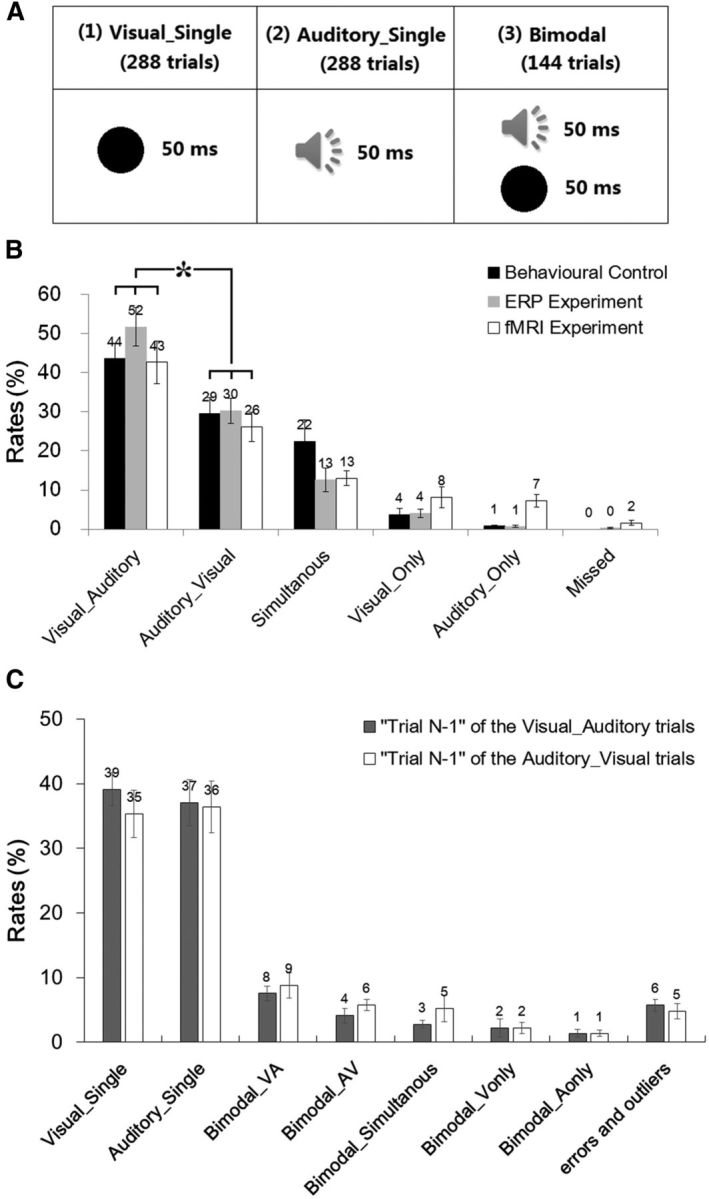Figure 1.

Stimuli and behavior data in the three experiments. A, Stimuli in the present study. Three types of stimuli were used: (1) unimodal visual target; (2) unimodal auditory target; and (3) bimodal audiovisual target. Participants were instructed to press one prespecified button when the visual target was presented, press another button when the auditory target was presented, and simultaneously press both buttons if the audiovisual target was presented. B, Proportions of the six different types of behavioral conditions in the bimodal trials of the three experiments. Bimodal trials were categorized into six behavioral conditions based on participants' online performance: (1) the Visual_Auditory trials in which participants first responded to the visual component and then to the auditory component; (2) the Auditory_Visual trials in which participants first responded to the auditory component and then to the visual component; (3) the Simultaneous trials in which participants responded simultaneously to the auditory and the visual components; (4) the Visual_Only trials in which participants responded only to the visual component; (5) the Auditory_Only trials in which participants responded only to the auditory component; and (6) the Missed trials in which no responses were made. C, Proportions of the different types of trials among the Trials N − 1 to the Visual_Auditory and the Auditory_Visual trials, respectively. *p < 0.05. The error bars indicate SEs.
